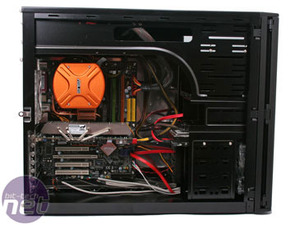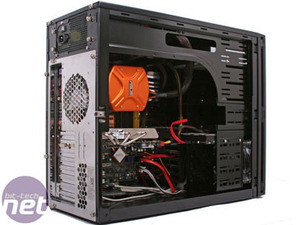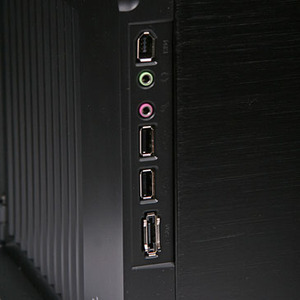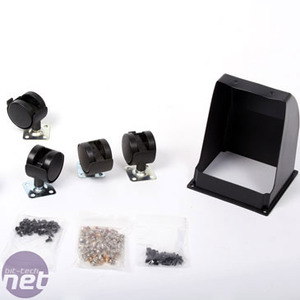Testing
So the Mirage might be big and spacious, but lots of room won't help if those low RPM fans can't shift enough air to stop our internal hardware grinding to a heat induced halt. Our battery of tests and test hardware are specifically aimed at pushing cases to their thermal extremes, and as always we're completely transparent in our methodology – if you have any questions or recommendations on how we could improve our method, let us know in the forums.There are three principle things we test when reviewing cases; the ease of installation of hardware, thermal performance and noise levels. Ease of installation is critical for us, as we'll be constantly tinkering in these cases, fitting and removing hardware on a near daily basis.
If the case door panel needs Gordon Freeman to get it open, or the internals are poorly designed, this is where a case will lose points. To test this we build a full system in the case, and to ensure reliability, we use the same hardware every time.
CPU: Intel Pentium XE 955 (dual-core, 3.46GHz)
Graphics Card: Sapphire Radeon X1600 XT Ultimate / Sapphire Radeon HD 3870 Ultimate
Motherboard: MSI P6N SLI Platinum
RAM: 2x 512MB Corsair XMS2-667
Hard Drive: 1x 250GB Western Digital WD2500 7,200RPM
Heatsink: Asus Silent Square Pro
However, as well as testing using our previous case test setup, we've now upgraded the graphics card to a completely passively cooled Sapphire Radeon HD 3870 Ultimate to really push the ability of modern cases to deal with toasty modern graphics cards. And while this hardware isn't exactly bleeding edge material, in this instance our objective isn't high software benchmark scores, but maximum heat output, to see how well the case can deal with higher than average hardware temperatures.
Our thermal performance testing involves us taking temperature readings inside the case under three different circumstances. We start by leaving the machine to run idle with nothing but desktop for 30 minutes, then knock things up a notch by running a 30 minute CPU/RAM test that starts to heat things up.
Finally, once the system has returned to the original idle temperatures, we stress test the GPU using a looped demo in 3DMark06 for 30 minutes. Throughout these tests we monitor the CPU, GPU, case and ambient temperatures, and while our results don't give us a sure fire conclusion, they do provide a fair indication of system cooling performance and the ability of the case to deal with heat in an open and well ventilated environment.
The final test of noise levels is the most difficult for us to gauge the performance, as noise levels will always be subjective to the individual, and for professional audio level testing we'd need some seriously expensive AV gear (Tim's Dictaphone just won't cut it sadly) and an acoustically balanced and soundproof room. To try and give the fairest result, we compare the case in question to the other cases we've worked with, and check to see if the case is audible over the low hum of the background noise in our office.
Now that the secret and dark art of case testing has been revealed, let's dive into some results...

MSI MPG Velox 100R Chassis Review
October 14 2021 | 15:04













Want to comment? Please log in.